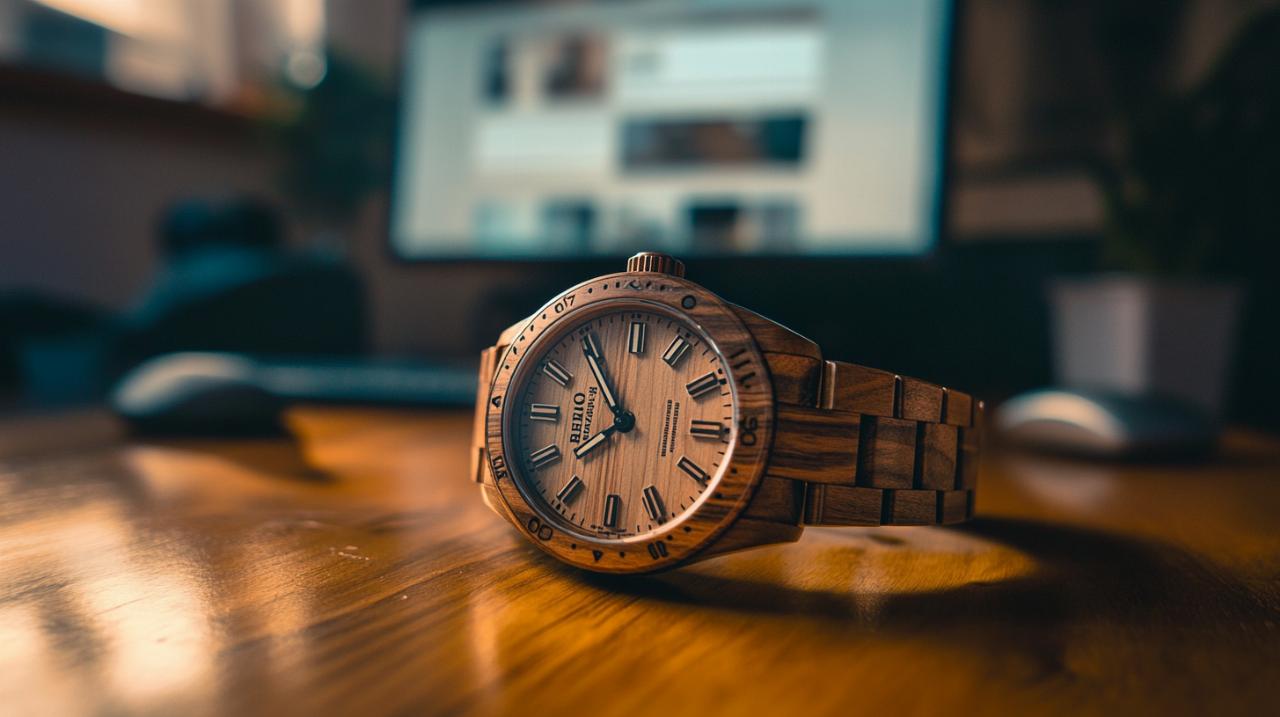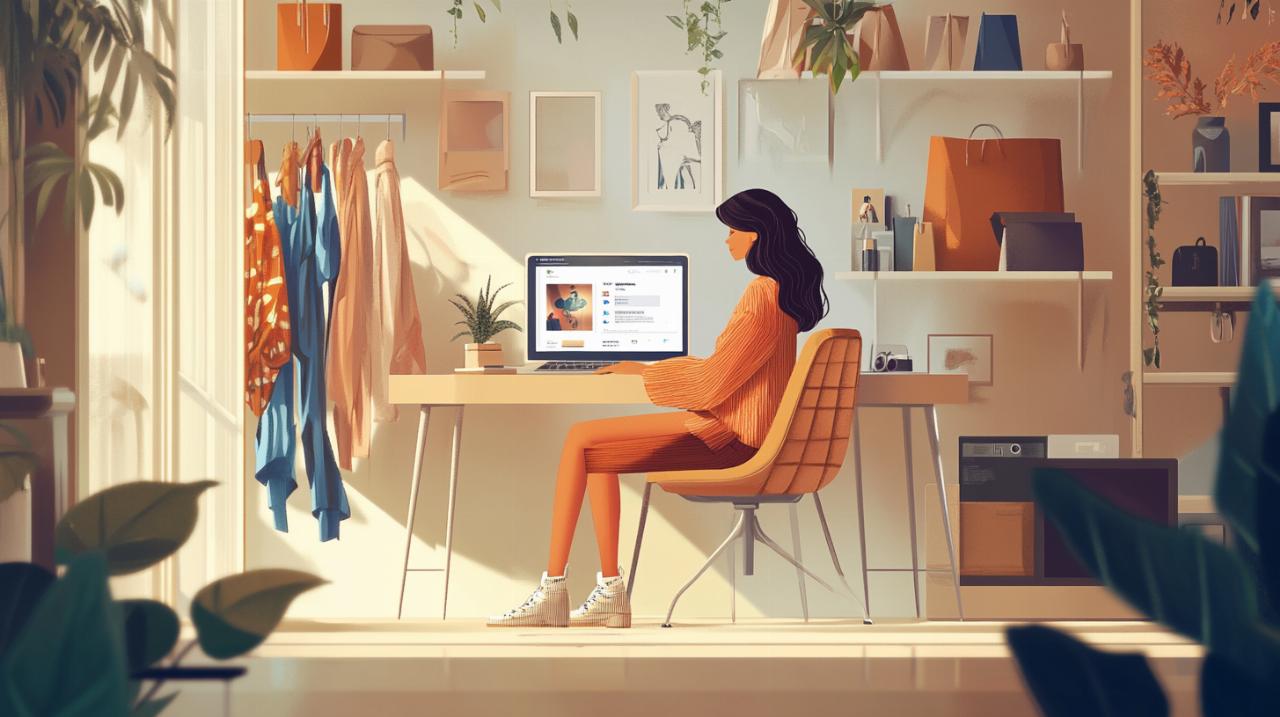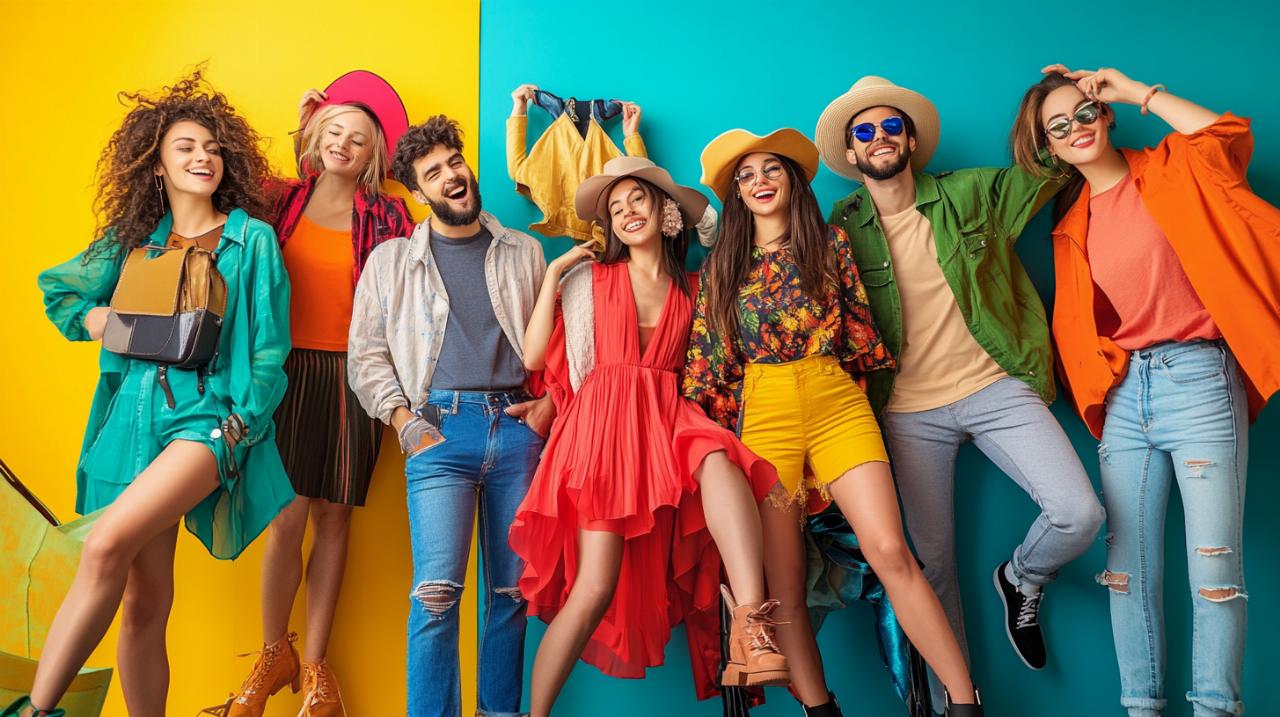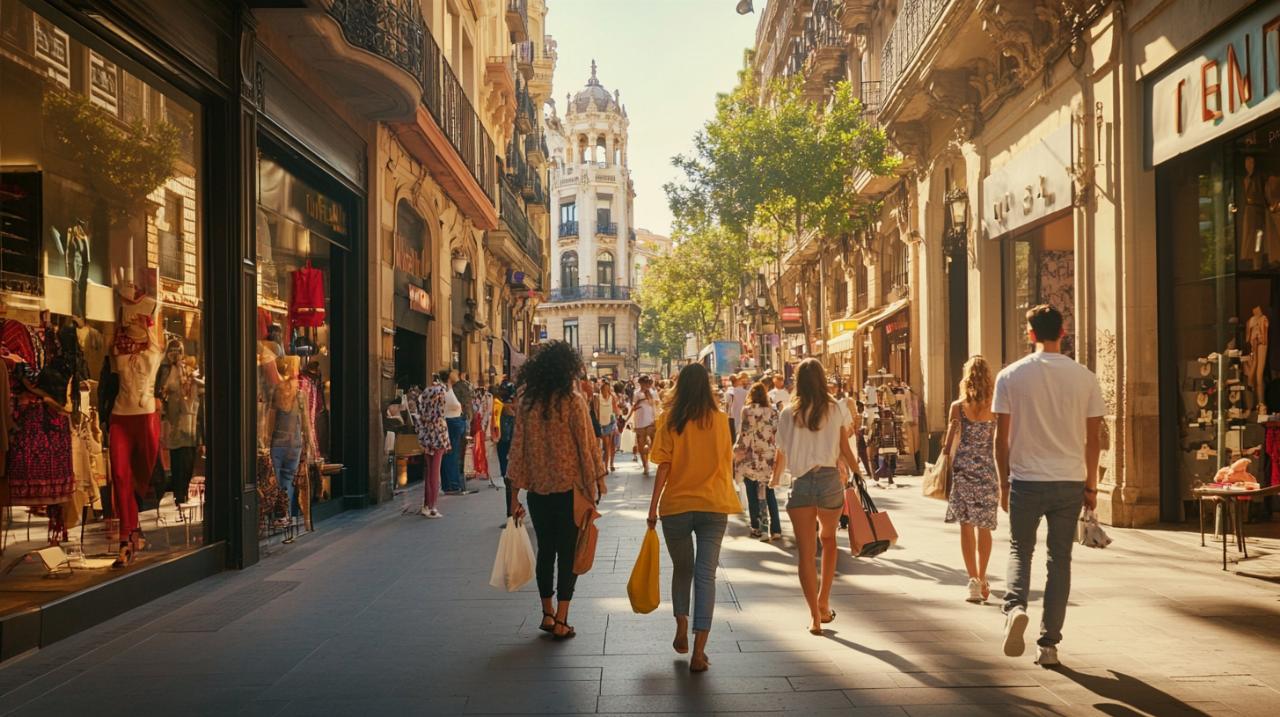The digital age has transformed how we discover and embrace what's current in the world of style, making it easier than ever to keep a finger on the pulse of fashion evolution. Whether you're looking to refine your personal wardrobe or simply enjoy observing how clothing evolves season after season, the internet offers an abundance of resources to help you stay connected with the latest shifts in design and aesthetic. Navigating this landscape effectively requires knowing where to look and how to filter the constant stream of information to find what truly resonates with your own sense of style.
Following fashion influencers and digital style leaders
Identifying key fashion influencers on social media platforms
Social media has become the primary stage for fashion influencers who shape public taste and introduce emerging styles to millions of followers. Platforms such as Instagram and TikTok serve as visual diaries where these digital style leaders share their daily outfits, attend exclusive events, and collaborate with designers. By following individuals whose aesthetic aligns with your own preferences, you gain access to a curated stream of inspiration that reflects real-time fashion movements. Influencers often bridge the gap between high fashion and everyday wear, demonstrating how runway concepts translate into wearable looks. Their posts provide insight into colour palettes, fabric choices, and silhouette trends that dominate the current season. Many influencers also engage directly with their audience through stories and comments, creating a sense of community around shared style interests. This interaction allows you to ask questions, seek advice, and discover new brands that might not yet be widely recognised. The key is to diversify your feed by following influencers from different backgrounds and fashion capitals, ensuring a broad perspective on global trends rather than a narrow view limited to one region or aesthetic.
Engaging with Fashion Bloggers for Daily Style Inspiration
Fashion blogs offer a more in-depth exploration of trends compared to the quick snapshots typical of social media posts. Bloggers often dedicate entire articles to dissecting a particular trend, explaining its origins, and offering styling tips that help readers incorporate new looks into their existing wardrobes. These written platforms provide context that goes beyond the visual, discussing the cultural and historical influences that shape contemporary fashion. Many bloggers, such as those who publish seasonal trend reviews several times a year, combine personal experience with industry knowledge to guide their readers through the ever-changing landscape of style. By subscribing to these blogs, you receive regular updates directly to your inbox, ensuring you never miss an important shift in fashion direction. Bloggers frequently collaborate with image consultants and personal stylists, bringing professional insights into their content. This collaboration enriches the discussion around trends, helping readers understand not just what is fashionable, but also what flatters individual body types and colouring. Engaging with fashion bloggers means you benefit from their research and expertise, gaining access to curated recommendations that save time and reduce the overwhelm of navigating countless fashion resources.
Subscribing to Fashion Newsletters and Online Publications
Curating your fashion newsletter selection
Fashion newsletters provide a convenient way to stay informed without having to actively search for new information each day. Many online magazines and fashion retailers offer free newsletters that deliver curated content straight to your email, covering everything from emerging designers to seasonal must-haves. The advantage of newsletters lies in their regularity and focus, as they compile the most relevant updates into a digestible format. When selecting which newsletters to subscribe to, consider the breadth of topics they cover and whether their editorial voice matches your personal interests. Some newsletters focus on sustainable fashion, while others might emphasise luxury brands or street style. By curating a selection that reflects diverse perspectives, you create a comprehensive overview of the fashion landscape. Newsletters also often include exclusive access to sales, early product launches, and behind-the-scenes content that enriches your understanding of the industry. This direct line to fashion insiders and brands ensures you remain informed about not only what is trending but also why certain styles gain prominence. The act of subscribing to newsletters is a simple yet effective method for integrating fashion updates into your daily routine, requiring minimal effort while delivering maximum insight.
Exploring digital fashion magazines and editorial content
Digital fashion magazines have evolved into dynamic platforms that offer far more than their print counterparts ever could. These online publications feature interactive lookbooks, video interviews with designers, and live updates from fashion events around the world. Exploring digital magazines allows you to immerse yourself in the world of high fashion while also discovering emerging trends that trickle down to mainstream retail. Many magazines publish regular trend forecasts, analysing upcoming seasonal themes based on runway shows, cultural shifts, and historical cycles. This editorial content provides valuable context that helps you understand the broader narrative behind individual pieces and collections. Digital magazines also offer the advantage of instant access to archived content, enabling you to research past trends and observe how fashion evolves over time. This historical perspective is crucial for developing a deeper appreciation of style and recognising patterns that repeat in predictable cycles. By regularly exploring digital fashion magazines, you cultivate a more informed approach to building your wardrobe, making choices that reflect both current trends and timeless elegance. The editorial content found in these publications often includes expert commentary from image consultants and stylists, adding layers of professional insight to your fashion education.
Utilising fashion search engines and trend forecasting tools
Navigating fashion discovery platforms
Fashion search engines have revolutionised the way we discover clothing and accessories, offering powerful tools to filter through millions of products based on specific criteria such as colour, style, and price. These platforms aggregate items from numerous retailers, allowing you to compare options and find exactly what you're looking for without visiting multiple websites. By regularly browsing these search engines, you naturally absorb current trends as they reflect what is most popular and widely available at any given moment. The algorithms used by these platforms often highlight trending items, giving you insight into what other consumers are gravitating towards. This collective behaviour serves as a useful indicator of emerging styles that might soon dominate the fashion scene. Fashion discovery platforms also enable you to save favourite items and create mood boards, helping you organise your style preferences and plan future purchases. The convenience of these tools means you can explore fashion trends during spare moments throughout the day, integrating research into your routine without requiring dedicated time. As you become more familiar with these platforms, you develop an eye for spotting trends early, often before they reach peak popularity. This proactive approach to fashion discovery ensures your wardrobe remains fresh and relevant, reflecting the latest developments in design and style. Using an online fashion trends tracker can further enhance this process by consolidating information from multiple sources and presenting it in a user-friendly format.
Understanding trend forecasting websites and their insights
Trend forecasting websites such as WGSN and Fashion Snoops represent the professional side of fashion prediction, offering detailed reports and analysis that inform designers, retailers, and industry insiders. While some of these services require subscriptions, many provide free content that gives a glimpse into their forecasting methods and conclusions. These websites analyse a wide range of factors, including cultural shifts, technological advancements, and historical patterns, to predict which styles will gain traction in the coming seasons. Understanding how trend forecasting works enhances your ability to anticipate changes and make informed wardrobe decisions. Many forecasting agencies identify trends up to two years in advance, giving them a long-term perspective that contrasts with the immediacy of social media. By following these agencies or reading summaries of their reports, you gain access to a more strategic view of fashion that goes beyond fleeting fads. Trend forecasters often highlight emerging materials, such as sustainable fabrics or innovative textiles, that will shape future collections. They also track the revival of vintage styles, noting the cyclical nature of fashion where trends from past decades resurface with modern interpretations. This knowledge empowers you to recognise the difference between short-lived microtrends and enduring movements that will influence fashion for years to come. Engaging with trend forecasting insights helps you develop a more sophisticated understanding of fashion, transforming you from a passive consumer into an informed participant in the style conversation.
Monitoring catwalk shows and fashion week coverage

Accessing live fashion week streams and presentations
Fashion weeks in major cities such as London, Paris, Milan, and New York have become increasingly accessible through live streaming and digital presentations. These events showcase the latest collections from established designers and emerging talent, offering a firsthand look at what will appear in stores over the coming months. By watching live fashion week streams, you witness the creative vision of designers as they translate concepts into tangible garments and runway presentations. The atmosphere of these events, including the music, staging, and model casting, provides context that enhances your understanding of each collection's narrative. Many fashion weeks now offer behind-the-scenes content and designer interviews, giving deeper insight into the inspiration and craftsmanship behind each look. Accessing these streams requires only an internet connection, democratising fashion week in a way that was impossible just a decade ago. Following fashion week coverage allows you to see trends before they filter down to high street retailers, positioning you ahead of the curve in terms of style awareness. You can observe recurring themes across multiple shows, identifying which elements designers collectively embrace and which are unique to individual brands. This analysis helps you predict which runway trends will become mainstream and which will remain niche. Fashion week streams also serve as entertainment and education, combining artistry with commerce in a way that captivates both fashion enthusiasts and casual observers.
Analysing runway trends from major fashion capitals
Each fashion capital brings its own distinct perspective to the global style conversation, influenced by local culture, history, and aesthetic preferences. London fashion, for instance, often emphasises experimental design and streetwear influences, while Parisian shows lean towards classic elegance and haute couture. By analysing runway trends from multiple fashion capitals, you develop a nuanced understanding of how geography shapes style. Runway shows reveal not only finished garments but also details such as fabric choices, embellishments, and construction techniques that define each season's aesthetic. Observing these details helps you appreciate the craftsmanship involved in fashion design and informs your own shopping decisions. Many runway trends translate into accessible versions available at various price points, meaning that even high-fashion concepts eventually reach everyday consumers. Tracking how runway trends evolve from catwalk to retail illustrates the fashion industry's complex ecosystem, where inspiration flows from top designers to high street brands. Analysing runway trends also involves recognising patterns such as the resurgence of metallic fabrics, oversized tailoring, and elements from the seventies and nineties. These recurring motifs reflect broader cultural nostalgia and designers' ongoing dialogue with fashion history. By paying attention to runway trends, you gain the ability to predict which styles will dominate upcoming seasons and make strategic additions to your wardrobe that align with current and future fashion directions.
Browsing online retailers and e-commerce fashion platforms
Tracking new arrivals and seasonal collections
Online retailers function as both shopping destinations and trend indicators, with their new arrivals sections offering a snapshot of current fashion priorities. By regularly checking these sections, you observe which styles brands are promoting and how they interpret broader trends for their target audiences. Seasonal collections reveal the colours, silhouettes, and fabrics that retailers believe will resonate with consumers, making them valuable resources for understanding mainstream fashion directions. Many e-commerce platforms update their inventory frequently, ensuring a constant flow of fresh options that reflect evolving tastes. Tracking these updates allows you to spot trends as they emerge and compare how different retailers approach the same seasonal themes. Some platforms also feature editorial content that contextualises new arrivals, explaining the inspiration behind collections and offering styling suggestions. This combination of commerce and content creates an immersive shopping experience that educates while it sells. By browsing online retailers regularly, you develop an intuitive sense of what is fashionable without relying solely on external sources for validation. The act of exploring new arrivals becomes a form of trend research that informs your personal style choices and helps you identify pieces that will remain relevant beyond a single season. Online retailers often offer customer reviews and styling photos that provide real-world context for how garments look and fit, adding another layer of information to your research.
Using e-commerce sites as trend indicators
E-commerce sites serve as powerful trend indicators because they reflect consumer demand and brand priorities in real time. The items featured prominently on homepages, in promotional emails, and through targeted advertising reveal which styles retailers are investing in and expect to sell well. Observing these patterns across multiple e-commerce platforms helps you identify consensus trends that transcend individual brands. Many sites also feature trend reports and curated collections that highlight key themes for each season, consolidating diverse styles into cohesive narratives. These curated sections often include items that exemplify specific trends, making it easy to see how abstract concepts translate into wearable pieces. E-commerce platforms also track bestsellers and most-viewed items, providing data-driven insights into what other consumers are purchasing and considering. This information is particularly useful for understanding which trends gain traction beyond fashion insiders and influencers. By using e-commerce sites as trend indicators, you tap into a collective wisdom that reflects both industry direction and consumer preference. The accessibility of these platforms means you can conduct trend research at any time, from any location, making fashion exploration a flexible and ongoing activity. As you become more attuned to the signals provided by e-commerce sites, you develop the ability to distinguish between fleeting fads and enduring trends, enhancing your overall fashion literacy and shopping strategy.
Participating in Online Fashion Communities and Discussion Forums
Joining fashion-focused social groups and networks
Online fashion communities offer a sense of belonging and shared enthusiasm that enriches your engagement with style. These social groups and networks bring together individuals with diverse perspectives, creating spaces for discussion, advice, and inspiration. By joining fashion-focused communities, you gain access to collective knowledge that spans different age groups, geographic locations, and style preferences. Members often share outfit photos, seek feedback on purchases, and discuss recent fashion news, creating a dynamic environment where trends are debated and dissected. These interactions help you see fashion through multiple lenses, challenging your assumptions and expanding your aesthetic horizons. Many communities also host virtual events such as styling challenges, trend prediction discussions, and live chats with industry professionals. Participating in these activities deepens your connection to fashion and provides opportunities to learn from others' experiences. Online fashion communities also serve as support networks where members encourage each other to experiment with new styles and develop confidence in their personal expression. The sense of camaraderie found in these groups makes fashion exploration feel less like a solitary pursuit and more like a shared journey. By actively participating rather than passively observing, you contribute to the community while simultaneously benefiting from the insights and enthusiasm of fellow members.
Contributing to Fashion Forums and Style Discussions
Fashion forums provide platforms for in-depth conversations that go beyond the superficial commentary typical of social media. These discussion spaces allow members to post detailed questions, share comprehensive reviews, and engage in thoughtful debates about trends, brands, and styling techniques. Contributing to fashion forums helps you articulate your own style philosophy while learning from others who have different viewpoints and expertise. Many forums have dedicated sections for topics such as sustainable fashion, colour analysis, wardrobe consulting, and vintage revivals, allowing you to explore specific interests in depth. The longevity of forum threads means you can return to discussions over time, observing how opinions evolve and trends develop. This historical perspective is valuable for understanding fashion's cyclical nature and recognising patterns that repeat across decades. Fashion forums often attract members with professional experience, including image consultants, personal stylists, and fashion writers, who share insider knowledge and practical advice. Engaging with these experts elevates the quality of information you receive and exposes you to industry standards and practices. By contributing to fashion forums and style discussions, you become part of a global conversation about fashion, where diverse voices collectively shape understanding and appreciation of style. This active participation transforms your relationship with fashion from passive consumption to engaged exploration, enriching both your knowledge and enjoyment of the ever-changing world of clothing and design.







